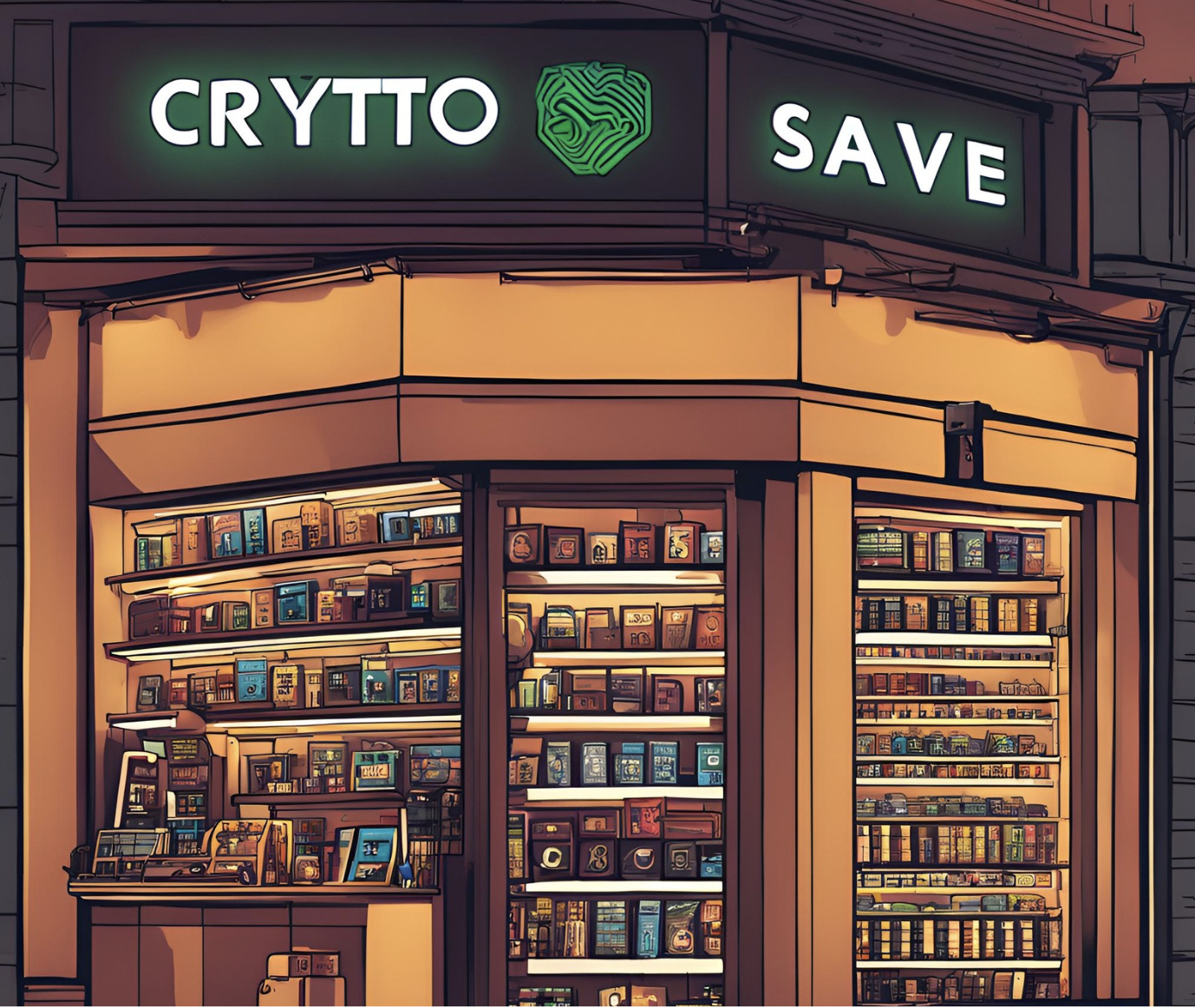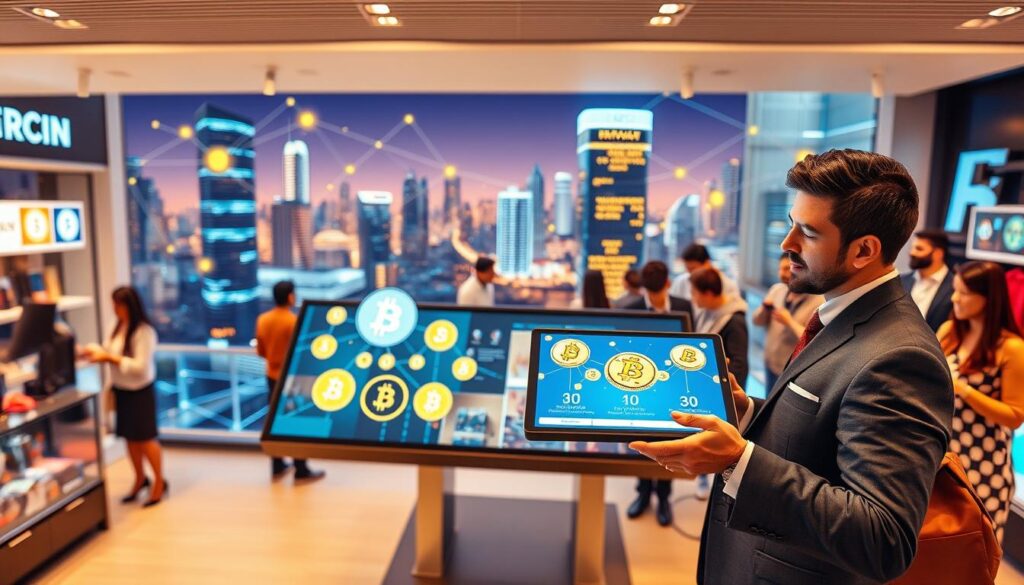Now Reading: How to Safely Store Your Crypto: Wallets and Security Tips
- 01
How to Safely Store Your Crypto: Wallets and Security Tips
How to Safely Store Your Crypto: Wallets and Security Tips

1. Introduction
Cryptocurrency wallets come in different forms with varying levels of security, accessibility, and convenience. The appropriate wallet to use depends on your security needs, the size of your holdings and the frequency with which you often rely upon access to funds.
Pros: super secure, protect from online threats, great for holding large sums of crypto
Cons: Not as user-friendly for regular transactions, needs physical devices.
2. Software Wallets
Software wallets are computer programs that run on a user’s device. They are convenient and secure enough for everyday use.
3. Related: 5 Cool Bitcoin Apps Platform: Desktop Wallet, Mobile Wallet and Web. Wallet.
Examples: Exodus (desktop), Trust Wallet (mobile), and MetaMask(web).
Pros: Easy to use, Learn and implement Low for small to medium doses.
Cons: Malware and hacking target, internet-dependent.
4. Paper Wallets
Paper wallets. Paper Wallet: The most simple form of Cold Storage. You can also print your private & public key on paper and use it as physical proof to spend the money. Since paper wallets are offline digital wallet forms, they have good security. Online services for creating paper wallets: Once you make your keys, they can be printed and kept safely. Web wallets. These are supplied by third-party services and referred to as online wallets. Web wallets can be used from any internet connection device, making them quick and convenient. Famous web wallets: block chain com, either as a coin base or a Binance wallet. The key benefit of web wallets is they are user-friendly. And the main problem is your money is managed by someone else, which means they could breach in and steal your funds.
Cold wallets: Cold Wallets: any wallet not connected online. This involves both paper along hardware wallets. Cold wallets fall under the safest category because they have very high-security features. We have cold wallets to safeguard our savings from more significant sums of crypto currency: They need to be more generous in spending for day-to-day transactions, taking out of a wallet, which is quite time-consuming. The most famous examples of cold wallets are Ledger devices or paper wallets.
Hot wallets. They are called online wallets that sign to the internet via a specific network. Use hot wallets for everyday to days transaction changes.
Cold Wallets: Cold wallets are less safe but have a better portion of hacker risk. A hot wallet is one that you can use some software or online service soon after moving your cryptocurrency into that account. For example, an exchange-sponsored wallet in which the user has deposited crypto and, using this is able to place trades for buy/sell (maybe not USD since many exchanges do not allow withdrawal/depositing) immediately afterwards. Choosing a wallet With so many wallets, you should decide what suits your purposes and works best for you.
5. What do you need the wallet for?
If you do not plan to interact actively with your funds and only use the wallet to store a significant amount of cryptocurrency, you should choose the most secure option. If, for trading or paying, you will need to use your funds, then it is better to select a convenient version; long-term Storage: a hardware wallet or cold one is recommended for additional security; frequent transactions: a software or hot wallet is the best choice because of the features and the ability to interact.
6. Security features
User experience. Most cryptocurrency holders store their funds in a wallet. Hence, it is essential to find an intuitive interface and clear instructions. Ease of use; customer support
Check compatibility. Find a wallet that is compatible with the size of your portfolio. Many wallets hold only selected cryptocurrencies. Some wallets may be used for digital assets, while others are designed to store only a single currency.
Multi-currency support: Mainly if you invest in several cryptocurrencies.
Specific coin wallets: It is also worth considering whether you want a wallet tailored to one specific currency.
Research wallet reputation and reviews: Finally, before deciding on a wallet, look for its reputation and customer reviews.
a. Online reviews: Some additional feedback can be found on online forums and by reading written reviews.
b. Community trust: lastly, do bots of select crypto currencies indicate trust towards this particular wallet? Top security tips for storing your crypto. Every wallet is good enough if you secure your assets by implementing the following security tips that help you protect your cryptocurrency from theft and loss.
7. Avoid common phrases
1. Passwords manager. Consider using a password manager aside from creating your apps.
2. Enable 2-step verification. By requiring a second confirmation form, such as. Set up 2-step verification. Try to enable this option anytime you feel like dealing with your wallet. b. Authy or Google authenticator. Trusted apps for generating secure codes.
3. Keep private keys safe. Cryptocurrency is subject to your private key. Please do not share it with anyone, and store it securely. The most secure location is the safe. Otherwise, a hardware is required. a. Take privacy. Keep private key and recovery phrases only for yourself, even if you think “no one will ever hack your computer”. b. Offline Storage.
4. Regular backup of a wallet. Ensure that the funds can be retrieved if the wallet is lost or essentially rid of. a. Backup wallet files. b. Encrypt backups.
5. URLs: Always check the website’s URL before entering your wallet credentials. Suspicious links: Do not click on links found in emails or banners if they are suspicious
6. Update your wallet’s software. Update your wallet software to guarantee that your wallet has the latest security features and patches. Regular updates help to protect you from bugs and vulnerabilities. Auto-updates: Set up your wallet software to update automatically if you have this feature. Manual checks: If not, always check for new updates regularly.
7. Use secure internet connections. Always connect your wallet to the internet from a safe source; do not use public Wi-Fi as it is more prone to hacking. VPNs: It might be a good idea to use a VPN to log into your wallet’s website. Not Public Wi-Fi: Avoid using public Wi-Fi to log into your crypto wallet.
8. Keep a physical copy of recovery phrases. Recovery phrases were meant to unlock your wallet if you lose your private keys and must be kept safe. Please write it down: write your keys on paper and safeguard this document.
8.Avoid digital copies
Delete any digital copies of your recovery phrase because they can be hacked. Hardware Wallets Security Best Practices Hardware wallets are an excellent investment because they provide enhanced security. However, if not used well, they may compromise your assets.
Secure Your Recovery Seed The recovery seed is several words using which you could recover your wallet. Keep the recovery seed secure, and never give anyone access to it. Physical Storage: Write down the recovery seed on a piece of paper and keep it in a secure place, like a safe or a safety deposit box. Avoid Digital Copies: Your recovery should be written on paper properly; do not store it on digital devices because they can be accessed if hacked.
Turn on the Security Passphrase Option. When you set up your recovery seed with a passphrase in specific hardware wallets, you must remember the password to access your wallet.
Using Exchange Wallets Highly avoid using created wallets in exchanges to store your cryptocurrency because they are vulnerable to centralized risk and hacking. After purchasing crypto, transfer it to your secure wallet. Transfer Safe Wallets: move your asset to hardware or cold wallets.
9. Lack of Backups
If you do not have backups of your wallet, coins and recovery phrases in a separate secure location (not on the same device), then there is a real chance that whether it be now or 20 years down the line, you might lose access to all of your crypto. Always back up safely
Be especially careful with your wallet files and recovery phrases Back up Your Wallets: Backup your wallets regularly!
Use Different Locations: Keep back up in different safe locations so you won’t lose it.
10. Falling for Phishing Scams
It is a scam in which fraudsters ask for personal details, tokens or other items to gain access to your wallet. Call phone numbers from other resources to ensure that emails, websites and messages are genuine.
Checking URLs: Make sure to check the URL of websites you visit before providing information on them.
Do not click on unsolicited emails to visit any website or download anything.
Conclusion:
As an investor, it is essential to store cryptocurrency securely. Knowing how wallets work and the types of security tips you can access can make all the difference in making informed decisions about keeping your digital assets safe. Pick the most suitable wallet for your requirements, use best practices in security and be suspicious of threats. While it is difficult to predict how the landscape of cryptocurrency will continue to change in the years ahead, by being proactive and responsive when breaches occur, you can minimize losses while navigating this thrilling (if dangerous) new world with confidence.















